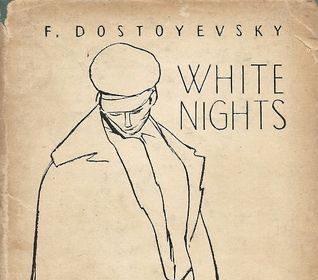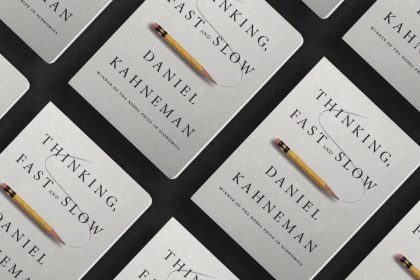“Happiness in intelligent people is the rarest thing I know.” This is a popular quote crafted by American Nobel laureate Ernest Hemingway, who is known for his art of writing, through which he has embellished the somber and gripping realities of life.
Ernest Hemingway is famous for his distinctive writing style characterized by economy and understatement. He also developed a style known as the ‘Iceberg Theory’ or ‘Theory of Omission’, where the deeper meaning is implied rather than explicit. This minimalist approach gave a new horizon to modern literature.
Among his creative legacy of fiction, A Farewell to Arms, stands as an eminent literary work. The novel is set during the Italian campaign of World War Ⅰ. First published in 1929, it is based on the harsh realities of the war. This novel intrigues the readers through its thought-provoking questions, redefines societal norms and values, and presents reinterpretations of honor and glory often associated with war.
The novel is divided into five sections, in which the writer conveys his messages through characters that he introduced in the novel. Each character describes the physical and mental trauma of the war. Frederic Henry is an American serving as an officer directing ambulance drivers in the Italian Army. He is the narrator and protagonist of the novel in the story, who fights and searches for his existence and identity. As he stands at the precipice of his own consciousness, he finds himself embroiled in a battle raging within his own mind, churning up a maelstrom of emotions that mirrors the chaos outside.
The character of Miss Catherine Barkley, a strong-willed and independent nurse, and a love interest of Henry, portrays the image of women purely as commodities. Another character, Rinaldi, an eccentric army surgeon serving near the front lines, highlights the mental and physical state of soldiers who are stuck in the war. The Priest, an army chaplain, often has discussions with Henry about God and war.
The novel scrutinizes societal norms and convention, exposing the devastating effects of war on the soldiers’ external and internal struggles, the erosion of women’s rights, and the destruction of nature.
In the novel, the protagonist and other soldiers want to escape from the state of disillusionment of ‘being’ and ‘not being’. They seek for their real existence and identity. Henry, connected to both American and Italian origin, finds himself in the predicament of alienation. He is unable to answer the internal questions of his consciousness that investigates his existence.
The other character, Priest, longs to return to his land Abruzzi in which he can revive his traditional values of faith and religion. His situation elaborates on the displacement caused by the war. His desires incarnate the sense of meaning and belonging, which are eradicated from his life. The soldiers are incarcerated in the war. Therefore, in their dialogues, they would crave escapism from the war, they would curse the war.
As Rinaldi says ‘This war is killing me. I am very depressed by it’, the protagonist poses the question, “Abstract words such as glory, honor, courage, or hallow were obscene beside the concrete names of villages, the numbers of roads, the names of rivers, the numbers of regiments and the dates.” This line encapsulates Hemingway’s strong critique on war and his emphasis on the importance of harsh realities rather than hiding behind them in illusion.
In the novel, Hemingway elaborates the vulnerability of women corrupted by the war. According to Barlow Kayes, the novel presents women purely as commodities. The portrayal of young women as prostitutes in Gorizia for the Italian officers, and the soldiers’ recreation from the monotonous war, reinforces chauvinistic attitudes towards women.
The submissive character of Barkley loses her own agency. The death of Catherine Barkley due to bearing the unwanted child further underscores the denial of female subjectivity in the text. Other female characters of the novel elicit roles that serve the needs and desires of men, rather than as lovers or caretakers. The war disrupts the real nature of female gender, as they just remain as an object to serve the soldiers.
The devastating effects of war on nature are demonstrated in the novel. The writer through different elements of literary devices depicted the destruction of war on nature. Water is a recurring symbol, often representing chaos and highlighting tumultuous experiences of characters during war. Hemingway uses the symbol of water in different ways. At the start, water is clean and clear, which signifies a calm environment. However, during the war in Italy, the water becomes ‘muddy’, which symbolizes how the war has destroyed the purity of nature.
War has not only destroyed human lives but also dismantled the serenity of nature. Other integral parts of nature, such as trees, mountains and landscapes, are annihilated by the war. The phrase ‘The trunks of trees too were dusty, and leaves fell early that year…’ showcases the devastation of war on nature. These instances illustrate how Hemingway uses elements of nature as a powerful symbol of destruction, reflecting the broader themes of chaos, loss, and the relentless forces of war on nature.
In conclusion, Hemingway has criticized the evils of war. Throughout the novel, he has unleashed the war as tumult and turmoil rather than glory and honor. He denounces the vague and ambiguous ideas associated with war. Through his simple and complying narrative writing style he takes the stance that war has only created disarray in the lives of humans. Through his simple approach and significant character development in A Farewell to Arms, Hemingway skillfully depicts the physical and mental toll of war.
The novel’s investigation of disillusionment, identity, and the human condition is still relevant today, providing timeless insights into the intricacies of life and conflict. The modest yet compelling narrative brilliantly illustrates Hemingway’s Iceberg Theory, urging readers to explore under the surface for deeper implications. As we consider the ongoing significance of Hemingway’s work, we are reminded of the fleeting nature of happiness and the never-ending search for meaning in a chaotic world.
















